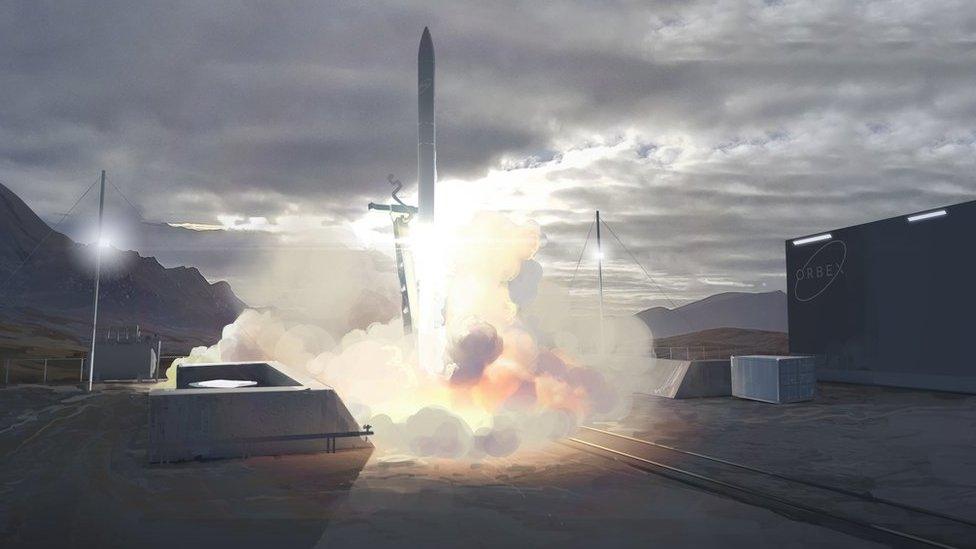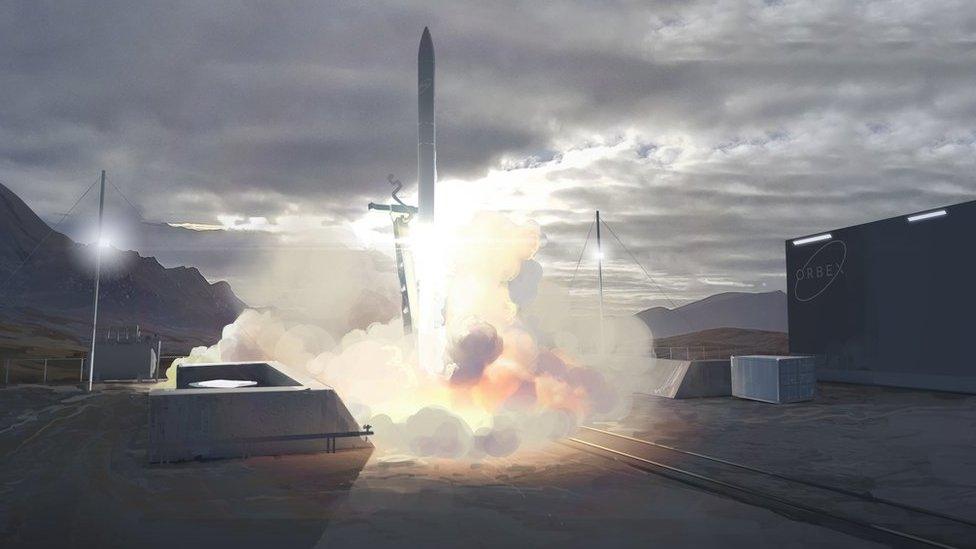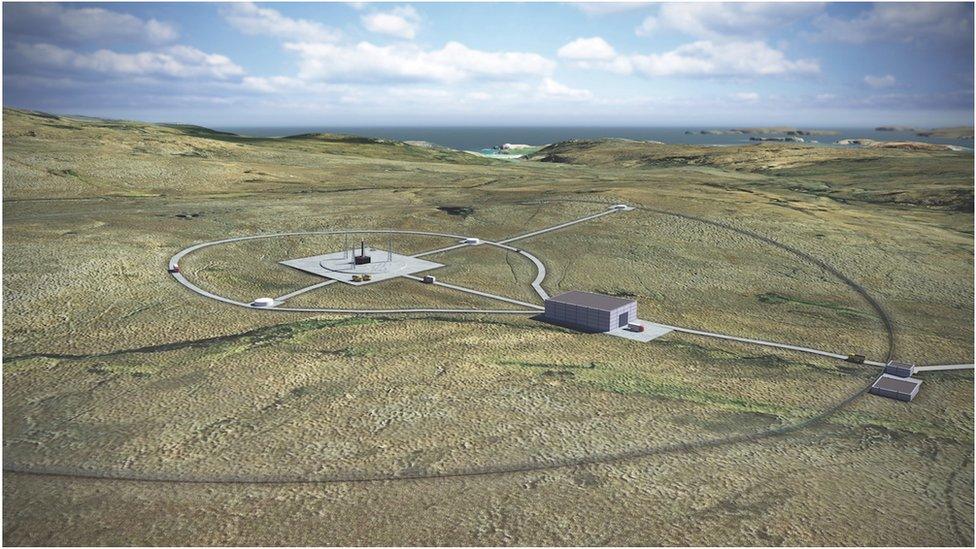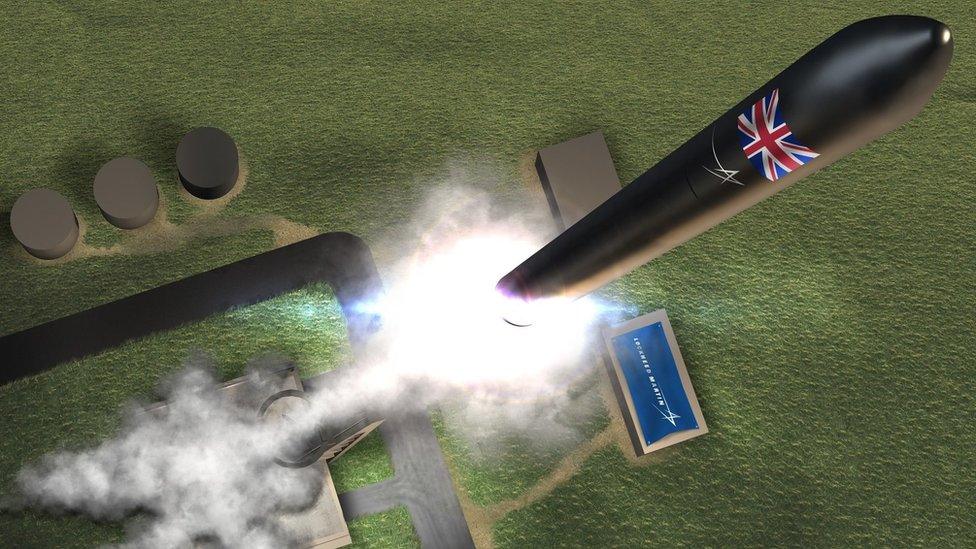Sutherland spaceport project to move to next stage
- Published

It has been proposed that microsatellites could be launched from Sutherland
Highlands and Islands Enterprise (HIE) said it will "step up" its engagement with people who live close to the site of a proposed spaceport in Sutherland.
Land on the Melness Crofters Estate (MCE) has been identified as the potential location for the launching of rockets carrying micro satellites.
MCE is set to work with HIE on the project following a ballot of crofters.
However, the spaceport is opposed by a campaign group set up by some crofters and non-crofting residents.
Protect The Mhoine has concerns about the spaceport having a negative impact on the environment and landscape, the exclusion zone's boundary and how consultation on the project has been handled.
'Unique and exciting'
Twenty seven of the votes cast in the MCE ballot were in favour of the estate working with HIE, and 18 were against. There was one spoiled ballot.
HIE said a planning application for the spaceport on the Moine peninsula could be submitted to Highland Council by the end of next year.
Roy Kirk, HIE's project director said: "The creation of a satellite launch centre in Scotland is a unique and exciting project.
"We are very grateful to the Melness crofters for agreeing to work with us as we progress plans to make our vision a reality in Sutherland.

Concept art of a Sutherland satellite launch site
"We firmly believe that the spaceport will open up a host of new opportunities for businesses that want to become involved in the growing space sector.
"As part of our next steps, we'll be stepping up our communications and making sure local people know what the spaceport is likely to mean for them."
He added: "It's understandable that people have concerns as well as hopes for such an innovative venture, and we will be making sure there are opportunities to meet and discuss all the issues, from jobs and other economic benefits, to safety and the environment."
'Safety considerations'
Dorothy Pritchard, chairwoman of MCE said: "MCE held a ballot that resulted in support for progressing discussions to reach a heads of terms. This simply means we are happy to continue discussions with HIE, work towards a conclusion on the heads of terms and ultimately the land lease."
"The onus will be on HIE to demonstrate a sensitivity towards safety and the environment."
She said those who voted in favour could see many local advantages including potential jobs and opportunities for young people.
But she added that "like those opposed to the development" they wanted to see the project done in a way that minimised the impact on the environment and adequately addressed safety considerations.
The spaceport project, called UKVL Sutherland, is being backed by the UK Space Agency.
Companies Orbex and Lockheed Martin both plan initial launches in the early 2020s, if the spaceport goes ahead.
Chris Larmour, of Orbex, said: "We are one important step closer to having satellites launched from British soil. Protecting the environment is one of Orbex's primary concerns - and that is reflected throughout our operations and our rocket design.
"We look forward to working with HIE and the crofters in the months and years ahead to make the spaceport a reality while safeguarding the incredibly beautiful environment that we will be operating in."
A spokesman for the UK Space Agency said: "We welcome the positive decision by the land owners on agreeing a future lease option with Highlands and Islands Enterprise, which is developing the Sutherland spaceport.
"Scotland is the best place in the UK to reach in-demand satellite orbits with vertically launched rockets.
"The proposed spaceport in Sutherland could create 400 jobs across Scotland and contribute to further growth of the UK's world-leading space sector."

Why the Moine?

The site offers the chance to launch satellites into a particular orbit.
Under the proposals, satellites launched from Sutherland would fly from north to south.
As the Earth spins the satellites would be able to observe the entire planet over a period of four or five days.
Organisations looking at crop patterns, pollution or the movement of ice have an interest in this type of satellite Earth observation.
- Published1 November 2018

- Published9 August 2018

- Published16 July 2018

- Published16 July 2018

- Published16 July 2018

- Published15 July 2018

- Published28 February 2018

- Published29 January 2016
